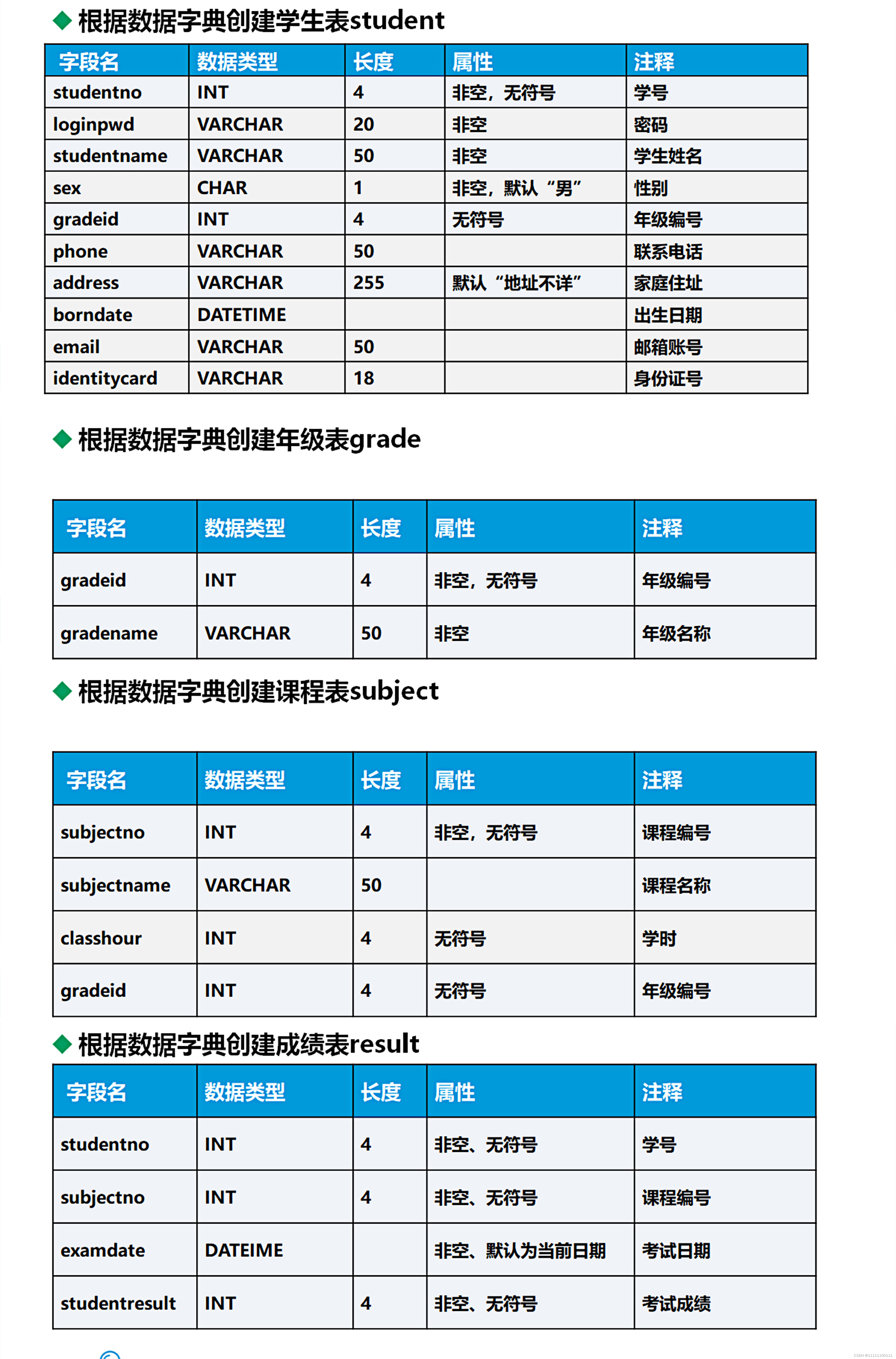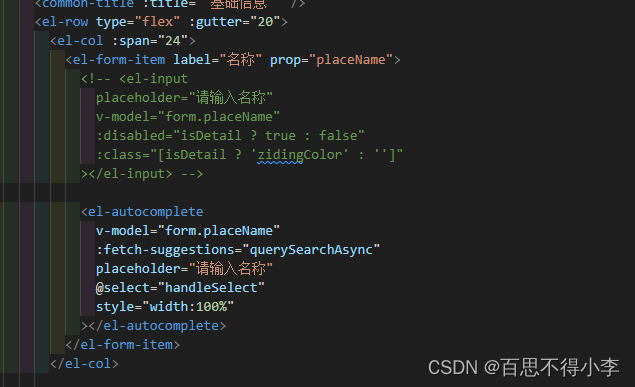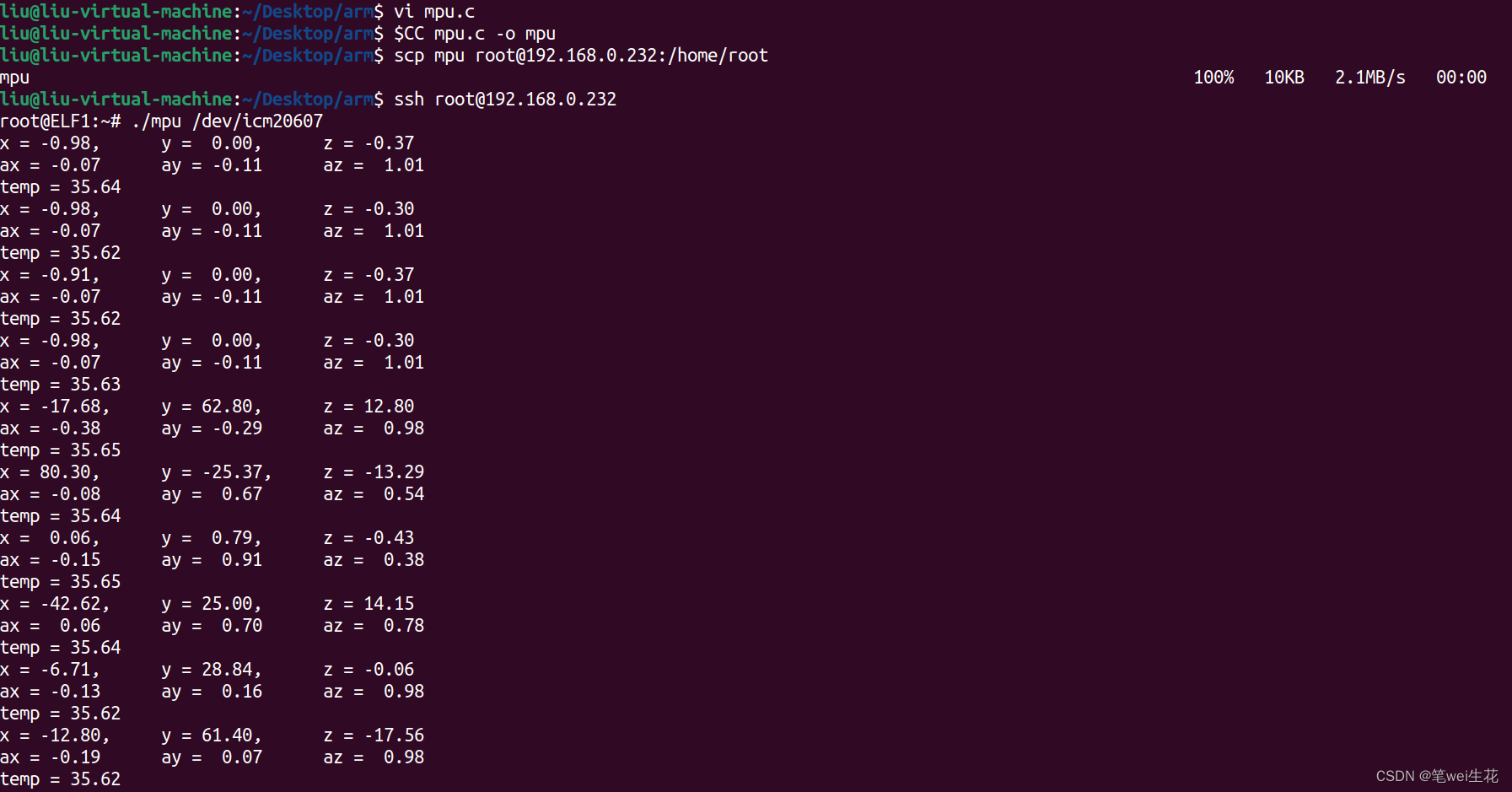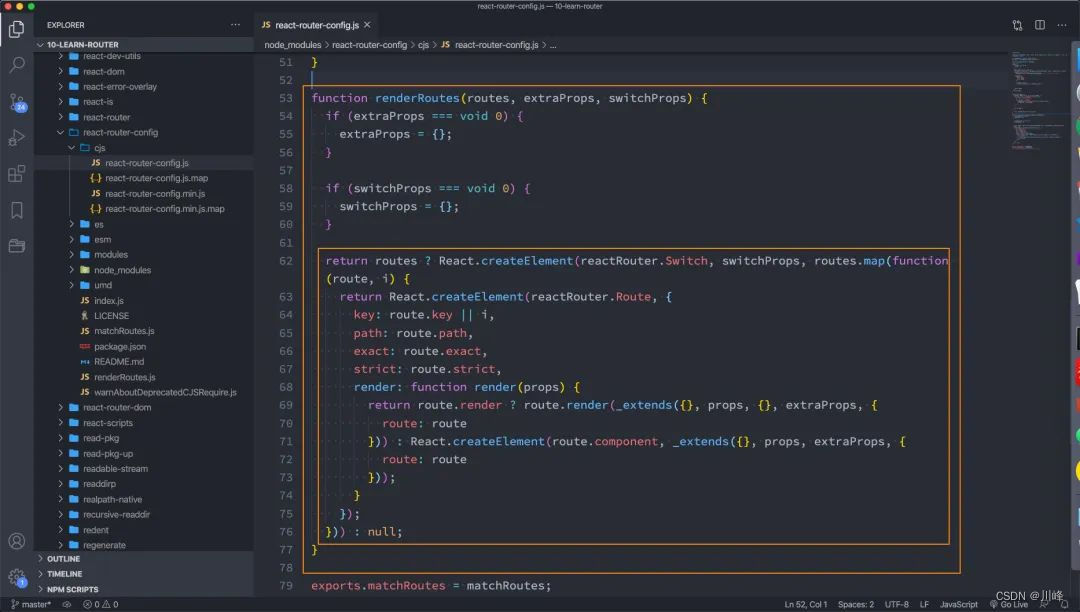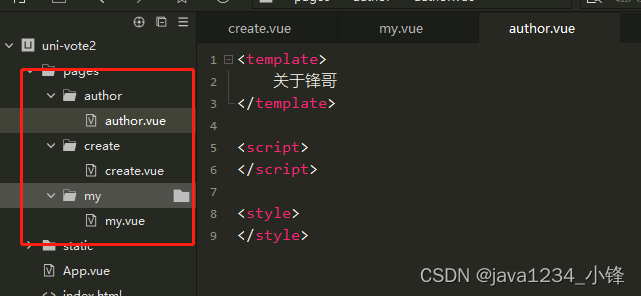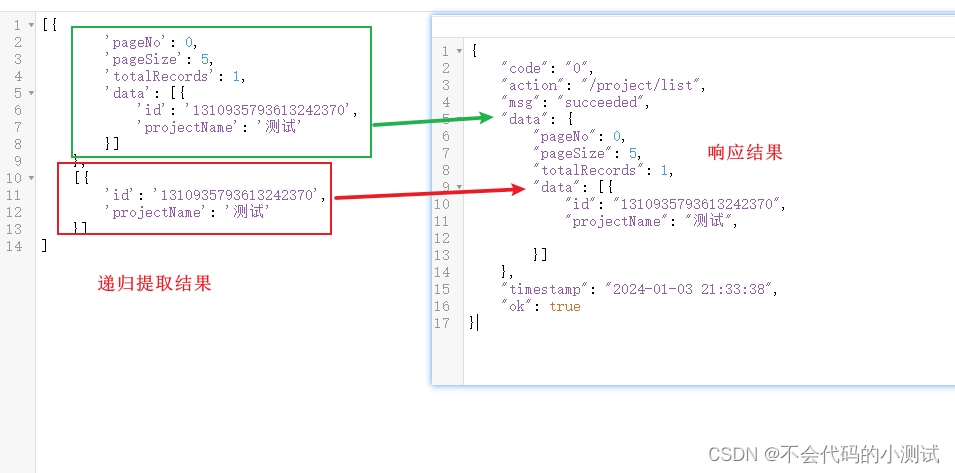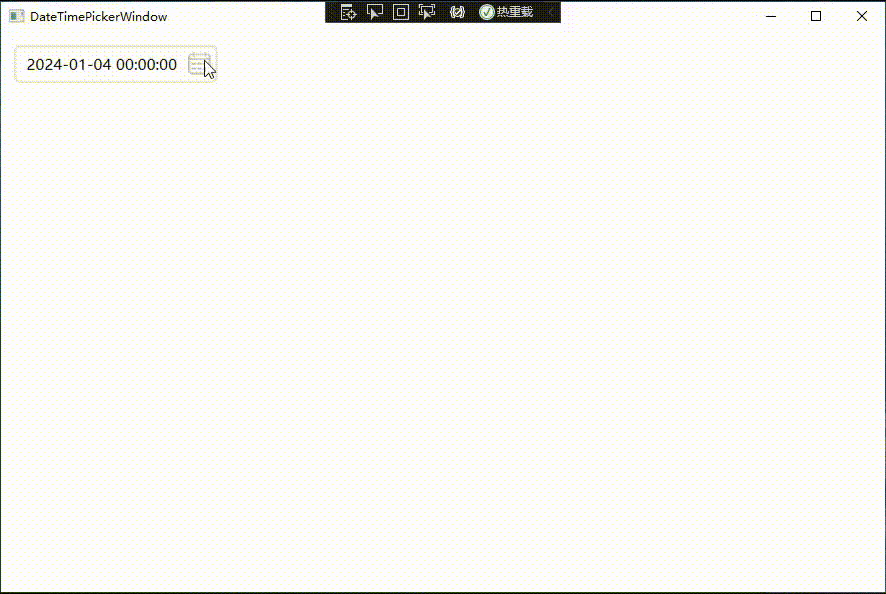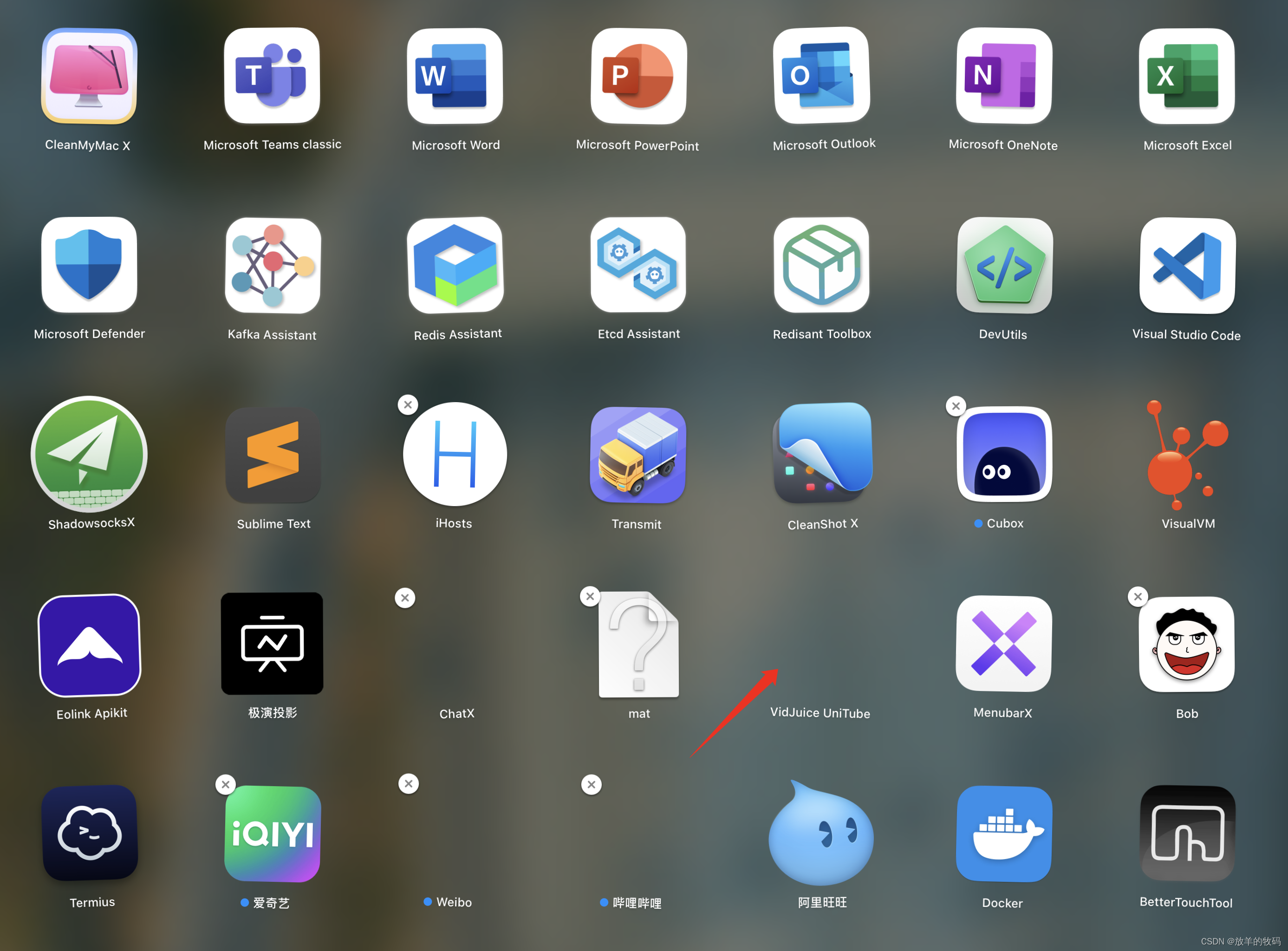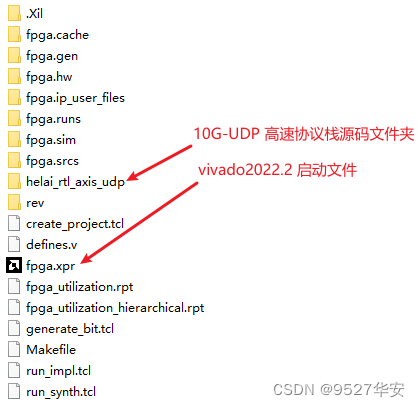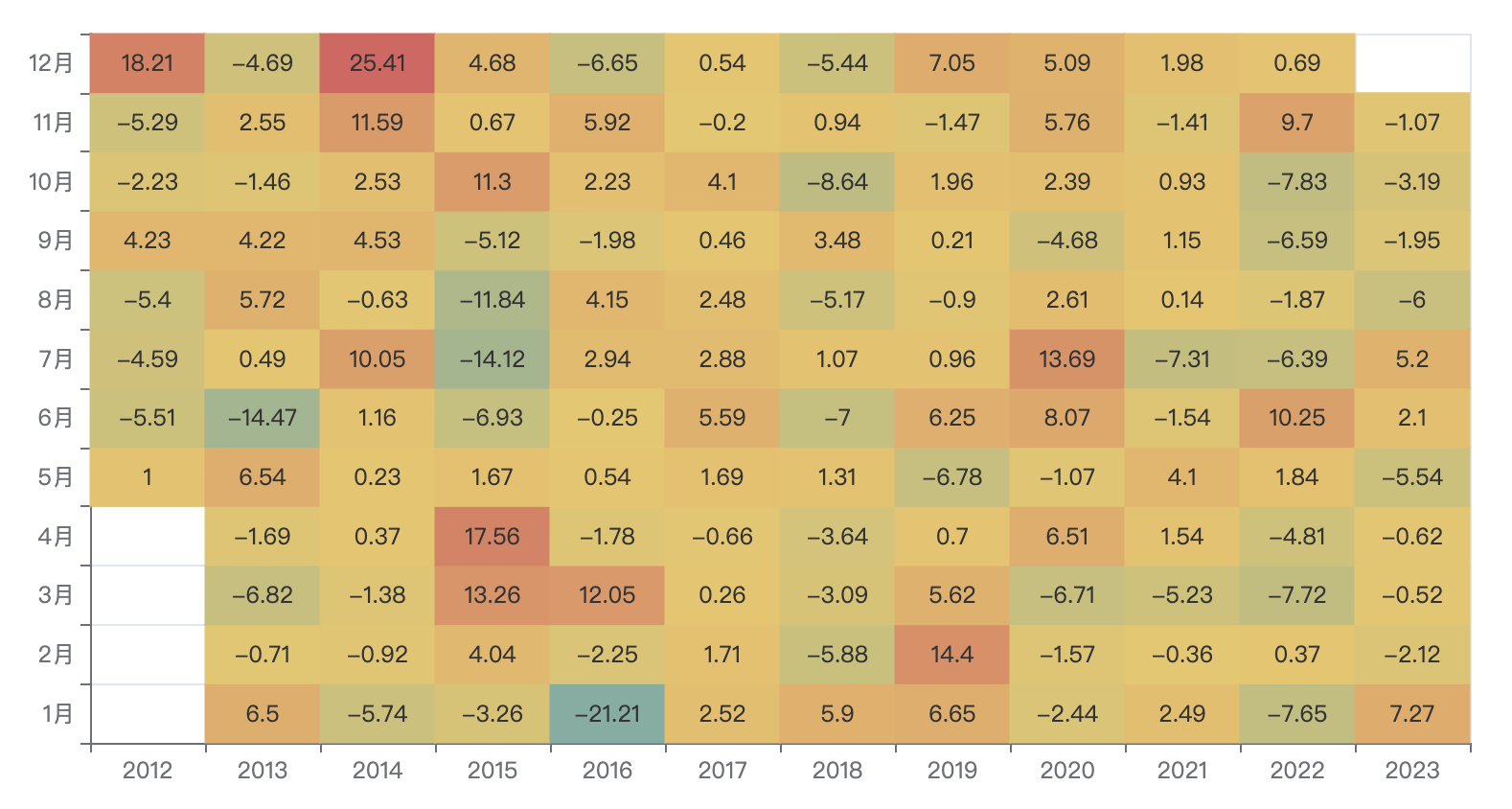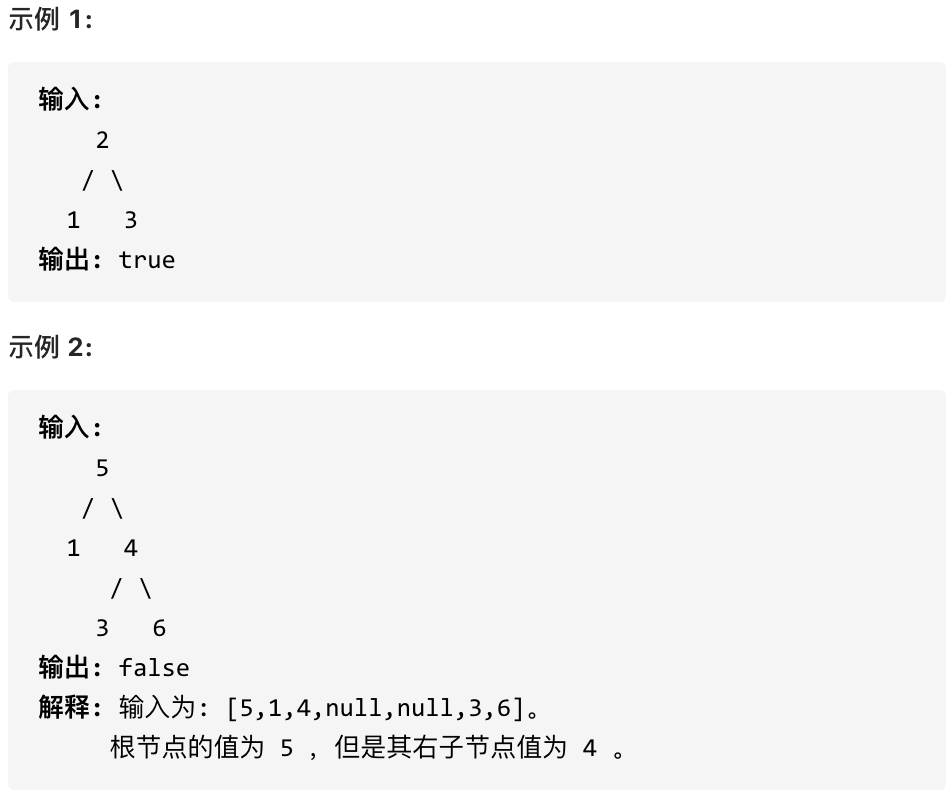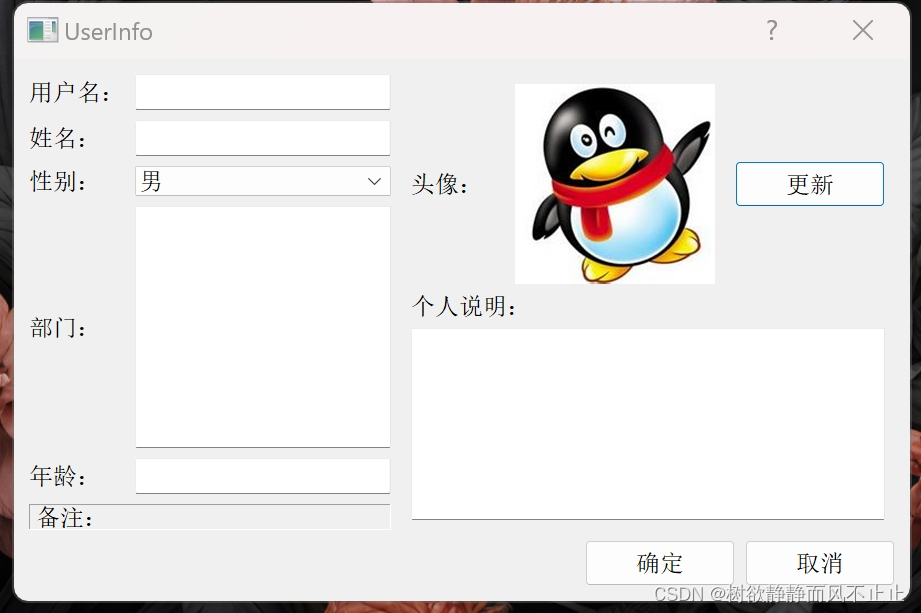
目录
一、设计需求
二、实现代码
三、代码解析
四、总结
一、设计需求
在很多应用程序中会有用户注册或用户编辑信息等界面。本文就设计一个用户信息编辑界面。要求包含用户名、姓名、性别、部门、年龄、头像、个人说明等信息。
二、实现代码
#ifndef DIALOG_H
#define DIALOG_H
#include <QDialog>
#include <QLabel>
#include <QLineEdit>
#include <QComboBox>
#include <QTextEdit>
#include <QGridLayout>
class Dialog : public QDialog
{
Q_OBJECT
public:
Dialog(QWidget *parent = 0);
~Dialog();
private:
//左侧
QLabel *UserNameLabel;
QLabel *NameLabel;
QLabel *SexLabel;
QLabel *DepartmentLabel;
QLabel *AgeLabel;
QLabel *OtherLabel;
QLineEdit *UserNameLineEdit;
QLineEdit *NameLineEdit;
QComboBox *SexComboBox;
QTextEdit *DepartmentTextEdit;
QLineEdit *AgeLineEdit;
QGridLayout *LeftLayout;
//右侧
QLabel *HeadLabel; //右上角部分
QLabel *HeadIconLabel;
QPushButton *UpdateHeadBtn;
QHBoxLayout *TopRightLayout;
QLabel *IntroductionLabel;
QTextEdit *IntroductionTextEdit;
QVBoxLayout *RightLayout;
//底部
QPushButton *OkBtn;
QPushButton *CancelBtn;
QHBoxLayout *ButtomLayout;
};
#endif // DIALOG_H
#include "dialog.h"
#include <QLabel>
#include <QLineEdit>
#include <QComboBox>
#include <QPushButton>
#include <QFrame>
#include <QGridLayout>
#include <QPixmap>
#include <QHBoxLayout>
#include <QCoreApplication>
#include <QDebug>
Dialog::Dialog(QWidget *parent)
: QDialog(parent)
{
//设置标题
setWindowTitle(tr("UserInfo"));
/************** 左侧 ******************************/
UserNameLabel =new QLabel(tr("用户名:"));
UserNameLineEdit =new QLineEdit;
NameLabel =new QLabel(tr("姓名:"));
NameLineEdit =new QLineEdit;
SexLabel =new QLabel(tr("性别:"));
SexComboBox =new QComboBox;
SexComboBox->addItem(tr("女"));
SexComboBox->addItem(tr("男"));
DepartmentLabel =new QLabel(tr("部门:"));
DepartmentTextEdit =new QTextEdit;
AgeLabel =new QLabel(tr("年龄:"));
AgeLineEdit =new QLineEdit;
OtherLabel =new QLabel(tr("备注:"));
//设置QLabel控件,使其具有“带边框凹陷”的外观效果
OtherLabel->setFrameStyle(QFrame::Panel|QFrame::Sunken);
//添加控件
LeftLayout =new QGridLayout();
LeftLayout->addWidget(UserNameLabel,0,0); //用户名
LeftLayout->addWidget(UserNameLineEdit,0,1);
LeftLayout->addWidget(NameLabel,1,0); //姓名
LeftLayout->addWidget(NameLineEdit,1,1);
LeftLayout->addWidget(SexLabel,2,0); //性别
LeftLayout->addWidget(SexComboBox,2,1);
LeftLayout->addWidget(DepartmentLabel,3,0); //部门
LeftLayout->addWidget(DepartmentTextEdit,3,1);
LeftLayout->addWidget(AgeLabel,4,0); //年龄
LeftLayout->addWidget(AgeLineEdit,4,1);
//OtherLabel占第五行,两列
LeftLayout->addWidget(OtherLabel,5,0,1,2); //其他
//设置拉伸系数,可以调整 QGridLayout 布局中各列的宽度分配
//column 表示要设置的列数,stretch 表示设置的拉伸系数
//第1列的宽度是第0列的三倍
LeftLayout->setColumnStretch(0,1);
LeftLayout->setColumnStretch(1,3);
/*********右侧*********/
HeadLabel =new QLabel(tr("头像: ")); //右上角部分
HeadIconLabel =new QLabel;
//获取图片路径
//QCoreApplication::applicationDirPath()程序所在的路径
QString iconPath = QString("%1/312.jpg").arg(QCoreApplication::applicationDirPath());
//设置图片
QPixmap icon(iconPath);
HeadIconLabel->setPixmap(icon);
HeadIconLabel->resize(icon.width(),icon.height());
UpdateHeadBtn =new QPushButton(tr("更新"));
TopRightLayout =new QHBoxLayout();
TopRightLayout->setSpacing(20);
TopRightLayout->addWidget(HeadLabel);
TopRightLayout->addWidget(HeadIconLabel);
TopRightLayout->addWidget(UpdateHeadBtn);
IntroductionLabel =new QLabel(tr("个人说明:")); //右下角部分
IntroductionTextEdit =new QTextEdit;
RightLayout =new QVBoxLayout();
RightLayout->setMargin(10);
RightLayout->addLayout(TopRightLayout);
RightLayout->addWidget(IntroductionLabel);
RightLayout->addWidget(IntroductionTextEdit);
/*--------------------- 底部 --------------------*/
OkBtn =new QPushButton(tr("确定"));
CancelBtn =new QPushButton(tr("取消"));
ButtomLayout =new QHBoxLayout();
//在按钮之前插入一个占位符,使两个按钮能
//够靠右对齐,并且在整个对话框的大小发生改变时,保证按钮的大小不发生变化。
ButtomLayout->addStretch();
ButtomLayout->addWidget(OkBtn);
ButtomLayout->addWidget(CancelBtn);
/*---------------------------------------------*/
QGridLayout *mainLayout =new QGridLayout(this);
mainLayout->setMargin(15);
mainLayout->setSpacing(10);
mainLayout->addLayout(LeftLayout,0,0);
mainLayout->addLayout(RightLayout,0,1);
mainLayout->addLayout(ButtomLayout,1,0,1,2);
//设定最优化显示,并且使用户无法改变对话框的大小
mainLayout->setSizeConstraint(QLayout::SetFixedSize);
}
Dialog::~Dialog()
{
}
效果展示:
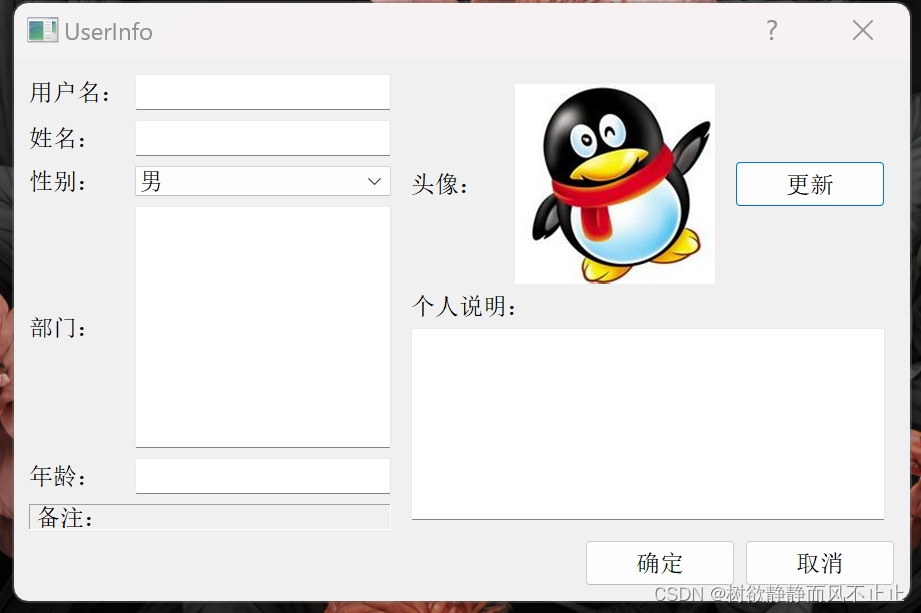
三、代码解析
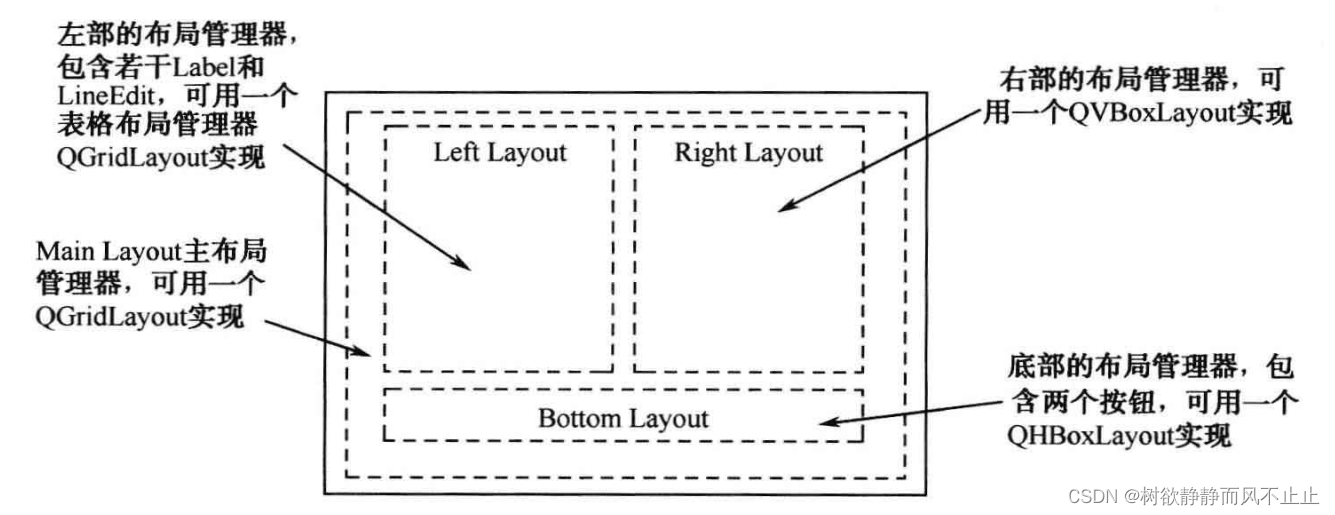
(1)void addWidget()
void addWidget()
(
QWidget *widget, //需要插入的控件对象
int fromRow, //插入的行
int fromColumn, //插入的列
int rowSpan, //表示占用的行数
int columnspan, //表示占用的列数
Qt::Alignment alignment=0 //描述各个控件的对齐方式
)(2)void addLayout()
void addLayout
(
QLayout *layout, //表示需要插入的子布局对象
int row, //插入的起始行
inf column, //插入的起始列
int rowSpan, //表示占用的行数
int columnSpan, //表示占用的列数
Qt::Alignment alignment=0 //指定对齐方式
)四、总结
QHBoxLayout 默认采取的是自左向右的方式顺序排列插入控件或子布局,也可通过调用 setDirection()方法设定排列的顺序 ( 如 layout->setDirection(QBoxLayout:: RightToLeft)修改为自右向左 )。QVBoxLayout 默认采取的是自上而下的方式顺序排列插入控件或子布局,也可通过调用setDirection()方法设定排列的顺序。
